German and Japanese Carmakers Spar, with No Clear Victor
![]() 03/17 2025
03/17 2025
![]() 643
643
Amidst solid data, the industry is closely watching how German and Japanese brands can turn the tide.
The rivalry between German and Japanese automakers has evolved from past debates over sales and quality to current "verbal" spats.
Recently, at the launch of the SAIC Volkswagen Teramont Pro, Fu Qiang, Executive Vice President of Sales and Marketing at SAIC Volkswagen, consecutively criticized three competitors, sparking heated discussions within the industry. Fu Qiang contends, "Across the entire Chinese automotive market, Japanese cars have comprehensively lagged behind, lacking sufficient innovation capabilities and competitiveness to navigate the harsh market challenges."
"BBA boasts excellent chassis and power systems, but their intelligence is relatively underdeveloped; many new-force models excel in urban driving, comfort, and intelligent performance, yet they lack versatility. Even with an extended-range solution, their driving performance under power loss conditions vastly differs from that of fuel vehicles."
Wang Qian, General Manager of Dongfeng Nissan's new energy brand, which was one of the Japanese brands mentioned, recently posted a rebuttal, stating, "I was taken aback by this speech. In an environment of mutual respect, it's akin to the pot calling the kettle black. Speaking responsibly, the intelligence of N7 leads ID by one generation and VW's product line by 12-18 months."
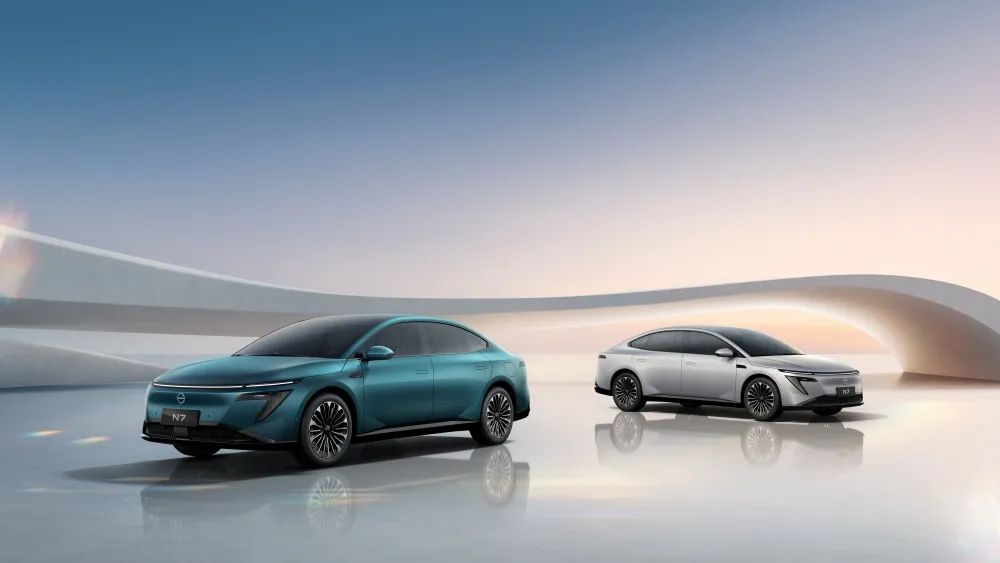
This incident ignited a fervent debate among netizens, with comments such as, "Before domestic cars battle joint ventures, the joint ventures are already fighting amongst themselves?" "Only those who outperform others have the right to critique. SAIC Volkswagen's intelligence, chassis, and power are not necessarily the best, so how can they casually criticize others?" Some netizens also expressed differing views: "The business world is akin to a battlefield. Now, the competition among domestic automakers has reached a critical juncture. If we continue to pay lip service to respect, it's futile; it's better to engage in a real battle."
But is it already time for an all-out battle?
It's undeniable that in recent years, independent brands have risen swiftly, seizing a significant market share from German and Japanese brands, spanning from the 100,000 yuan economic car market to the luxury car market above 300,000 yuan. According to the China Passenger Car Association, in February this year, domestic independent brands sold 910,000 passenger vehicles, a year-on-year increase of 51%, with a market share of 65.6%, a year-on-year increase of 10.6%.
In contrast, joint venture brands represented by German and Japanese brands can be described as declining daily and tottering.
In February this year, mainstream joint venture brands sold 330,000 passenger vehicles, a year-on-year decrease of 2%. Among them, the retail share of German brands was about 17%, and the retail share of Japanese brands was 10.7%, both showing year-on-year declines. Meanwhile, domestic luxury car sales also declined, with 150,000 units sold in February, a year-on-year decrease of 8%, and a market retail share of 10.8%. Previously, German brands held considerable influence in this segment.
This impact affects every German and Japanese brand equally.
Taking the top three Japanese brands as an example, in February this year, Honda sold 33,866 vehicles in China, down 25.6%, and Nissan sold 31,508 vehicles in China, down 24.7%. This marks their continuous decline for over ten months. Toyota fared slightly better with 69,000 vehicles sold in China in February, including 33,000 by FAW Toyota and 36,000 by GAC Toyota, but it is also "not as formidable as it once was."
The cumulative sales of these three Japanese brands in China in the first two months of this year totaled 366,000 units, almost equivalent to BYD's sales in one month.
Thus, amidst solid data, how German and Japanese brands can reverse the situation has become the industry's focus. However, in the first quarter of 2025, which has not yet passed, mainstream German and Japanese brands' strategic actions and trending topics were even more numerous than in the past year, and they each have their own strategies.
Is it a decline or an awakening?
Taking one of the protagonists of this spat as an example, Nissan's predicament in China reflects the collective anxiety of Japanese brands. From 2021 to 2024, the market share of Japanese cars fell from 22.6% to 13.7%. Under the dual pressure of price wars and new energy transformations among Chinese automakers, Nissan failed to hold onto its basic fuel vehicle market and missed the opportunity of electrification.
But what can be done?
Recently, Nissan officially launched a new product for its electrification transformation strategy in China - Dongfeng Nissan N7. The launch of N7 signifies a comprehensive renewal of Dongfeng Nissan's technology system and marks Dongfeng Nissan's re-entry into China's new energy market competition with intelligent electric technology as its new label.
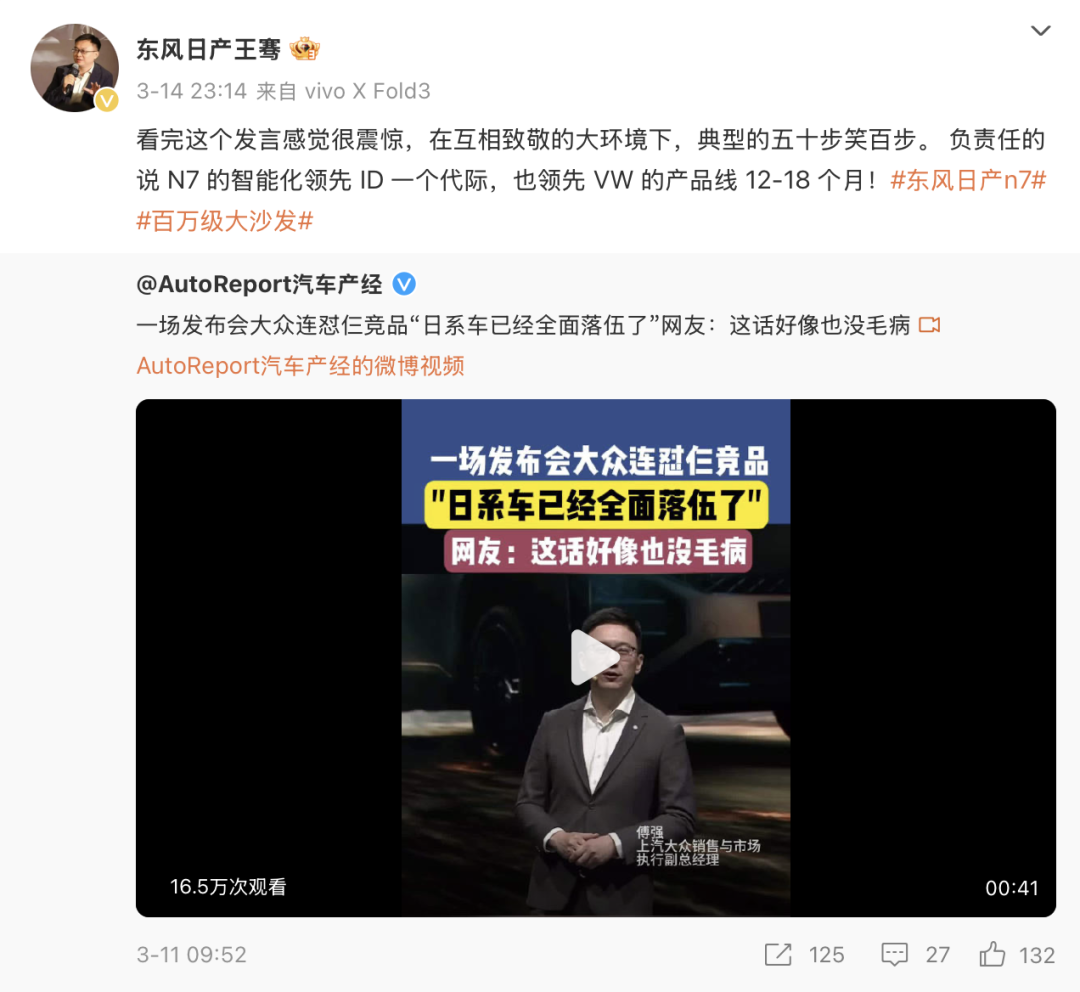
In addition to initiating a comprehensive cooperation with China's leading technology last year to create a business strategy of "in China, for China, to the world," Nissan also emphasized at this conference the regaining of the label of "Technology Nissan" in the era of intelligent electrification.
It's worth mentioning that with the integration of excellent large models and intelligent driving technologies from Chinese companies such as DeepSeek and Momenta, catching up with the market's leading level in intelligent technology may not be a pipe dream.
For example, in the forefront of competition in the Chinese market, such as intelligent cabins and intelligent driving, Dongfeng Nissan adopts a "self-development + cooperation" approach to catch up with the domestic first-tier level. In the field of intelligent driving, Dongfeng Nissan cooperates with Momenta to create a one-stop end-to-end intelligent driving large model based on the NVIDIA Orin intelligent driving chip, achieving intelligent driving performance covering high-speed NOA and urban NOA, as well as full-scenario parking.
But possessing these does not necessarily equate to a "turnaround."
"In the next 2 to 3 years, intelligent driving will become a standard feature like seat belts." On the evening of February 10, at BYD's "Tian Shen Zhi Yan" intelligent driving conference, Wang Chuanfu made a surprising announcement. He announced that BYD's entire lineup of models will be equipped with "Tian Shen Zhi Yan" high-level intelligent driving, with the first batch of 21 models to be launched soon. Among them, models priced at 100,000 yuan and above will come standard, and most models priced below 100,000 yuan will be equipped.
For a long time, intelligent driving technology has primarily been applied to some high-end new energy vehicle models, with a high price threshold for consumer experience. BYD has directly lowered the price of high-speed intelligent pilot driving (high-speed NOA) models to the 70,000 yuan range. As BYD "enters" the intelligent race, mainstream automakers in the industry have successively announced their intelligent goals and timetables.
Therefore, as the trend of "intelligent equality" becomes increasingly apparent, Japanese automakers have also begun to highlight intelligence, especially intelligent driving, as a prominent selling point of their products.
For example, the recently launched GAC Toyota Bozhi 3X demonstrates "new vitality of joint ventures." GAC Toyota introduced that, unlike in the past when models were directly imported from Toyota, Bozhi 3X is GAC Toyota's first jointly developed model. GAC Toyota is responsible for product definition and development, from the body to the three electric systems, "planning from start to finish."
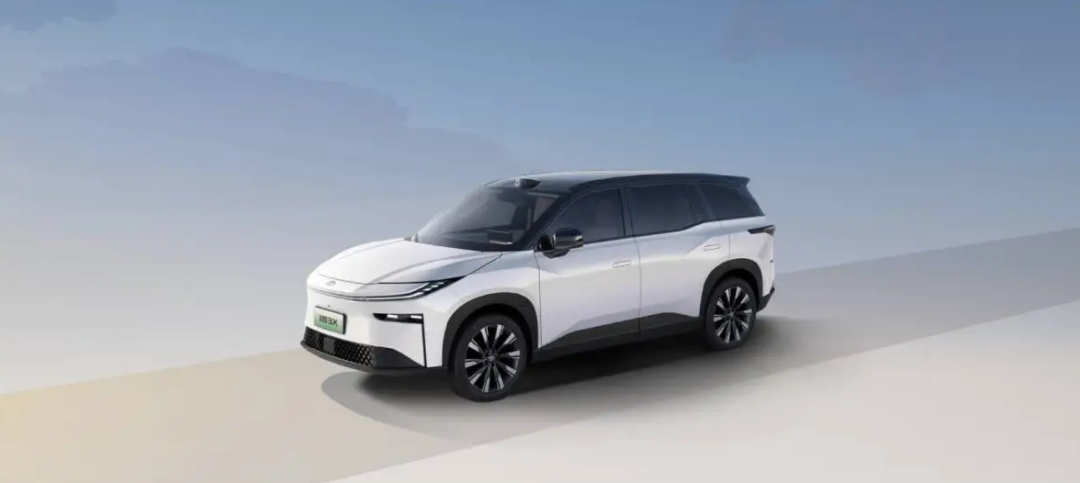
Especially facing the short-term shortcoming of insufficient intelligent capabilities, GAC Toyota's strategy is to "compete as a team," making full use of third-party resources and cooperating with leading intelligent suppliers such as Huawei and Momenta to rapidly improve product intelligence levels.
It is reported that Bozhi 3X fully embraces China's high technology and introduces many new suppliers, with Chinese brand suppliers accounting for up to 65%. Relying on the localized supply system and Toyota's "nurturing procurement system," Bozhi 3X directly increases the cost-effectiveness of new vehicles.
It can be seen that Japanese brands are now incorporating all the product strengths that new forces used to pride themselves on, giving Chinese consumers whatever they desire. Such a high degree of "localization" is unprecedented in the history of Japanese electrification.
None can be left out
Japanese brands are accelerating changes, and China remains the "antidote" for German brands' transformation. However, it's evident that improving operational efficiency and market competitiveness has become a challenging issue for every German brand.
Just a few days ago, Mercedes-Benz revealed its 2025 technology and product strategy in its financial report, mentioning the "Operational Improvement Plan" - a clear goal to reduce production and operating costs by 10% by 2027. On the other hand, it's also tackling the dealer network, optimizing operations through the "addition and subtraction" strategy, including merging inefficient outlets and upgrading store hardware and other channel innovations.
Mercedes-Benz's efficiency revolution is not limited to the Chinese market.
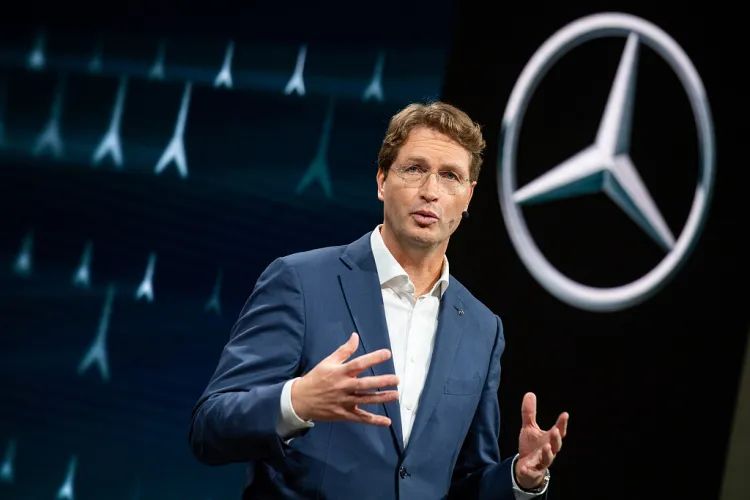
At the financial report meeting, Ola Kaellenius, Chairman of the Board of Management of Mercedes-Benz Group AG, emphasized that to ensure the company's competitiveness, Mercedes-Benz is taking measures to make the company faster, leaner, and stronger. Mercedes-Benz's official plan shows that it will appropriately reduce production capacity in Germany, its home base, with an expected reduction of 100,000 units.
Additionally, German brands are also vying for the discourse power of "technological luxury," with research and development also taking place in China, the largest market for intelligence.
For example, BMW is continuously strengthening its localized battery production layout in China and cooperating with Chinese technology companies to develop innovative technologies such as intelligent human-computer interaction and large cylindrical batteries to ensure future growth potential.
At the same time, BMW has established a full-stack intelligent connected vehicle research and development system in Beijing, Shanghai, Shenyang, and Nanjing in China. These bases not only provide robust support for BMW's product research and development in the Chinese market but also serve as an important source for its technological innovation globally.
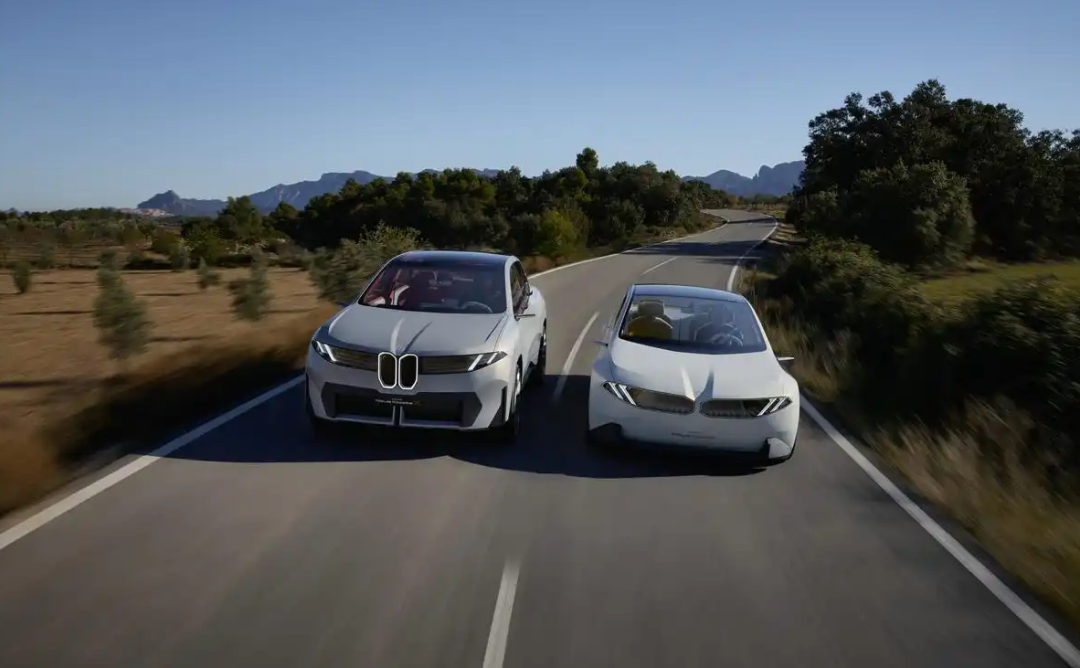
In the past two years, competition in the automotive industry has become more comprehensive, shifting from previous competitions in scale to all-round capabilities competitions to see who can survive longer. Therefore, it tests a company's flexibility, resilience, and risk resistance capabilities even more.
For Volkswagen, the identity of the Chinese market is changing from a "cash cow" to an "investment hub." In this round of transformation, the Volkswagen Group has invested 50 billion yuan in China. Thanks to this large-scale investment, Volkswagen will be the first to enter the "delivery mode" in China in 2025, with the next generation of intelligent connected vehicles developed locally about to enter the market.
It's worth mentioning that Volkswagen has also lowered its stance in decision-making such as marketing and re-examined its layout. For example, the "one-price" model currently offered by multiple joint venture brands was first proposed by SAIC Volkswagen at the Chengdu Auto Show in August 2024.
"From the market feedback, we know that this model is relatively well-received, loved by users, dealers, and manufacturers alike," said Fu Qiang.
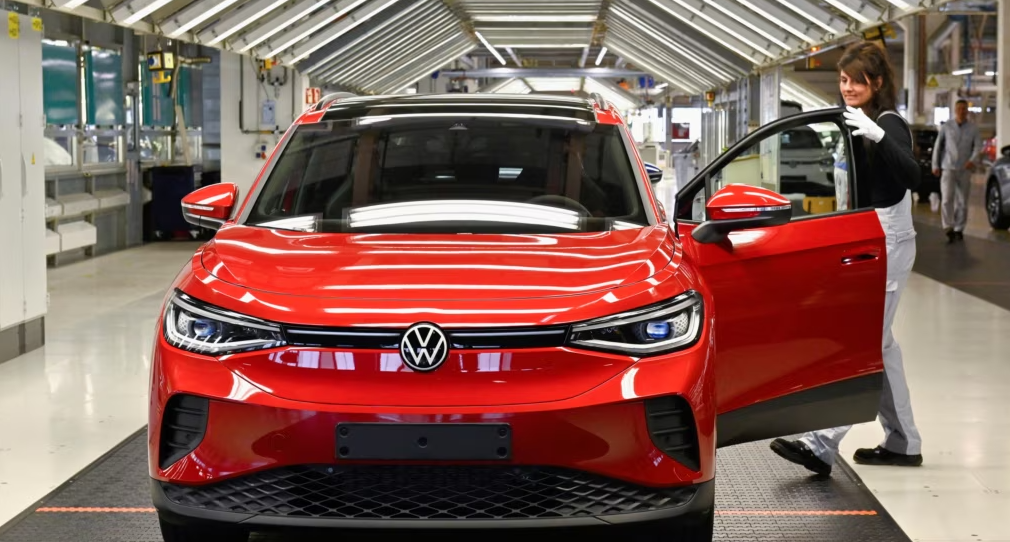
Breaking the traditional 4S store sales model and moving closer to the direct sales model, the car buying experience is more akin to that of new forces; reshaping the joint venture pricing system, in the game between product strength and brand premium, "speaking with products" has gained the upper hand... Obviously, this is an innovation stemming from Volkswagen's better understanding of the Chinese market from both the decision-making and market ends.
From the joint venture 1.0 era dominated by "market for technology" to the comprehensive transformation and upgrading of China's automotive industry towards electrification and intelligence, joint venture brands have now reached a critical juncture in the "entrepreneurial 2.0" era in China. However, both Japanese and German brands now face the three "mountains" of squeezed market space, slow transformation and upgrading, as well as room for improvement in product launch speed and product competitiveness.
The question is, how much time is left to solve these problems?
Note: Some images are sourced from the internet. If there is any infringement, please contact us for deletion.
-END-







